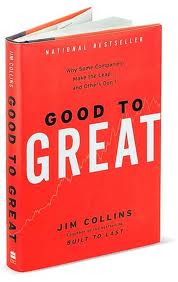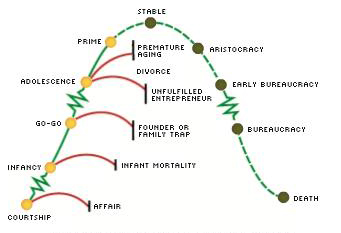Ready for 2012? – Part 10 (final)
This is the 10th in a series of blog posts under the main headline “Ready for 2012?”
The series of blog posts are addressing the #1 headache of any growing Independent Software Vendor: How to predict, budget and meet revenue targets.
The objective of the blog posts is to outline a 2012 “preparation process” where you end up having a plan and a budget which is a stepping stone to a position as the global market leader in the future and where the stakeholders are 100% aligned and committed to execute the plan and deliver the numbers for 2012.
The first post was about alignment and identification. The need for having all stakeholders behind the plan.
The second post introduced the concept of organizational health and the need to get important stakeholders involved in the process.
The third post explained how you could actually perform an alignment & identification check.
The fourth post was about the revenue challenge. How do you predict and manage 50-100% growth rates.
The fifth post was about the fundamentals. The business frameworks which must be in place before you can create major (predictable) growth.
The sixt post was about “The curse of reality and the 7 steps to “predictable” results”. How to build on facts, distinguish between reality and prejudices and learn from your experiences.
The seventh post carryied the title: ”2012 – a step on the way to where?” The post explained the need for a 3-5 year perspective making 2012 a logical and necessary step on the path to the near term perspective.
This eighth post was about the actual budgeting and planning process.
The ninth post was about “Your budget, your plan and the KPI’s”
This post #10 is about “Setting the Team.”
The people on the bus
Did you ever get the opportunity to read “From good to great” by Jim Collins?
Jim Collins published his “Good to Great” bestseller in 2001. The book was the result of 5 years of research figuring out why some companies were able to outperform their competitors. Jim Collins spent the 5 years researching why some companies suddenly broke out from their peer group and continued to perform 3 times better than their peers for 15 consecutive years.
He extracts 6 principles, or “mode of operation,” which all great-performing companies seem to share and that good-performing companies lack.
This blog post will focus on the first principle:
First who… Then what!
“We expected that good-to-great leaders would be setting a new vision and strategy. We found instead that they first got the right people on the bus, the wrong people off the bus, and the right people in the right seats – and then figured out where to drive it. The old adage “People are your most important asset” turns out to be wrong. People are not your most important asset. The right people are.” (Page 13).
We gave a hint in this direction in both the first post and the second post in this “Ready for 2012?” series. Now we will take it a step further.
Does the “people on the bus” principle also apply to Independent Software Vendors?
Yes, I personally believe this principle is universal. My personal [slider title=”research”]Before making it into management consulting I worked for 2 government institutions, taught at 2 Universities; worked as a salaryman for 11 private companies of which 3 were start-ups and 2 were US multinationals; co-owned 3 companies and served as a non-executive member on three board of directors. As a management consultant, I have worked for numerous companies. In each and all of these companies and institutions you could have replaced 90-99% of the people with no negative impact on the performance. In fact you could easily have dismissed some and experienced an immediate improvement in performance.[/slider]reveals the exact same findings. Getting the wrong people “off the bus” can release tremendous amounts of energy. Getting the right people on the business makes a dramatic difference.
The small versus the large organization.
Jim Collins writes about “large” organizations. He is studying established and listed companies. The bus he is referring to is the “top executive bus.”
What about smaller organizations? The 10 – 1.000 people organizations?
As this series of blog posts “Ready for 2012?” is targeted at the ISV (Independent Software Vendor) with aspirations for becoming the new market leader, we will focus on what the “people bus” principles mean to them.
The larger the organization the smaller is the percentage of people who makes a difference. Procedures, infrastructure and inertia take over. It is easier to find replacements for routine jobs and there is a large pool to source from. I am not saying that people don’t matter in large organizations. I am just saying that you cannot expect to have 100.000 “exceptional” people in a 100.000 people organization. Large organizations needs exceptional management to organize and motivate ordinary people to deliver exceptional results.
The smaller the organization the bigger the percentage of people who makes a big difference:
- The degree of specialization is smaller, you need people who can cover multiple disciplines.
- Your installed customer base is still small, you need people who can sell to new accounts and compensate for your lack of image and reputation.
- You need to manage the Value Chain much faster, adapting to the needs of your customers and defeating you competitors.
- The internal procedures are still being defined; you need people who can think and act on their feet.
Lack of market share, procedures, infrastructure and inertia requires leadership, initiative, social skills, courage and out-of-the box thinking and behavior. It is difficult to find replacements for such people and there is only a small pool to source from.
“Der Fisch stinkt vom Kopf”
The “ultimate, top #1 challenge” for most small organizations is executive management. Executive management in small organizations is mostly founders/owners. If executive management shouldn’t be on the bus, then we certainly have a challenge. According to Jim Collins’ findings, great companies all have level 5 leaders and leadership cultures:
- Great top leaders are passionate and strong willed, but they are not big egos, tyrannic or charismatic. They listen well and have an integrating leadership style.
- They are focused on the success of the company and the team and not on their own success.
- They understand how to attract the right people and move/get rid of the wrong people.
- The want and can face brutal facts.
- They are looking for a market/segment/concept where the company can become a clear #1.
If you are a top executive by default because you are the owner of the company, you must look yourself in the mirror and ask “do I have these qualities?” If not, you may serve your own interests better by stepping aside. Leave the bridge to one who has these attributes.
This is one of the most difficult undertakings in the life of any company. Adizes calls this issue the Founder or Family Trap. If you are involved with startups and companies in the Infancy, Go-Go and Adolescence stages you see this issue all the time. It is hard to replace the passion of the founder, yet he/she is a bottleneck for growth. You also see them in large organizations where a new generation of family members lack the qualities required to lead the organization.
The issue is two sided:
- You need the founder to step aside, take another seat on the bus or leave the bus.
- You must find a CEO who can work with the founder if he remains on the bus.
Being a CEO in a company where the [slider title=”founder”] There may be more than one founder/owner working in the company. Let’s just focus on the top man/woman for now.[/slider]is still on the bus requires that the CEO becomes co-owner. It is highly unlikely that the day-to-day team-work can survive a CEO as a mere salaryman. Finding a CEO who can replace a founder is a real challenge. It’s beyond the scope of this post to dig into this issue, but we do recommend getting help from executive search professionals.
Manning the bus
With the right CEO in place the rest of the bus can be organized. How do you apply the “First who… Then what” principle in a small and medium sized ISV company?
Following our recommendation described in post 3 you can perform an alignment check. An alignment check will show to which degree your current team share the same perception of the fundamentals: the customer value proposition, the growth strategy and importance of the 15 key management areas. [slider title=”The alignment check”]How often should you perform an alignment check? We recommended performing an alignment check no less than twice a year and no less than 100 days after adding new people to your management team.[/slider]will verify or falsify if you all want to take the the company in the same direction. However, the alignment check will not reveal if the individual team member has the profile for executing your strategy and plans.
We recommend using the following priorities in reviewing your current team members and in searching and selecting the “right” people for your ISV [slider title=”bus:”]We are talking about the 5-10% of the staff including the management team. It is this group who will drive the growth and development of the company.[/slider]
Specialists: You need someone with outstanding technical skills and someone with outstanding domain knowledge. In addition they need to develop management capabilities. Growing from your current local position to global leadership requires an outstanding [slider title=”product offering”] We are talking the whole product here. All parts of the whole product must be outstanding and extremely competitive. Only the market leader may survive with a mediocre product for some time. The challenger must be superior on several key areas.[/slider]
Flexibility: Look for people who have the skills required, but who are not afraid of covering all the other bases, when needed.
Energy level and adaptability: Look for people with drive and passion. Maybe they will drive too fast at times, but you can manage that. Maybe the will yell at each other, but you moderate that. Having a bunch of people being nice and polite to each other doesn’t get you moving. They must respect each other, but they should be prepared to take a friendly fight now and then.
Social skills: Team work can create massive results. The challenge is to find those who apply the social energy on company issues rather than on everything else. These days team work can be virtual!! People don’t need to be in the same room all the time to release social energy.
Growth opportunity: Look for someone to whom this challenge represents an opportunity for personal growth. You cannot afford green rookies, but choose ambition over experience.
Two way assessment center: Don’t rely on interviews only. Use personality tests and preferably the two [slider title=”two way assessment center”] To select and uncover who possesses the right, often holistic, qualities is particularly difficult. General psychological tests, list of qualifications, scrutiny of CVs and references, supplemented by interviews can reveal if the candidate has the potential to be an immediate success in a well-described job. But whether personalty, values, social skills, energy, communication skills, shared chemistry and business acumen match the requirements are best tested in a simulated reality. The two way assessment center is a 3 hour session where the candidate is asked to respond to a certain challenge (maybe provided in advance). During his presentation he is confronted with a series of additional questions and information, which is representing the “brutal facts” of the state of the company. The two way assessment center always changes the ranking of the candidates and often even (on paper) top qualified candidates fail to act on their feet and simply disqualify.[/slider]
Avoid
Avoid people from big companies who are used to all types of support functions and prestige artifacts. You may be impressed with someone who has worked for a large recognized company. Don’t ever make that mistake. You cannot transfer the brand value of a great company to an individual who worked there. You should in general always disregard who they worked for. Look at who they are, what they have done and the results they have achieved.
Avoid political creatures. They are difficult to spot. People who have survived in the top of large organizations are often (but not always) political creatures. You find them everywhere. They suck the energy out of you and the organization. [slider title=”Political ability”]Political behavior is based on making rational calculations of other people’s power and acting accordingly[/slider] can be a true asset in dealing with external stakeholders (customers, vendors etc.), but never internally.













